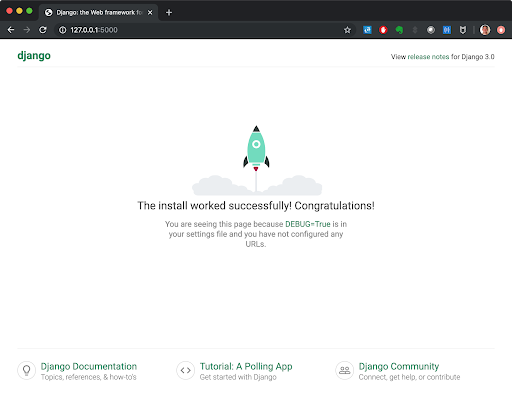

- CHEPAEST WAY TO HOST DJANGO POSTGRES APP HOW TO
- CHEPAEST WAY TO HOST DJANGO POSTGRES APP INSTALL
- CHEPAEST WAY TO HOST DJANGO POSTGRES APP UPGRADE
- CHEPAEST WAY TO HOST DJANGO POSTGRES APP CODE
- CHEPAEST WAY TO HOST DJANGO POSTGRES APP PASSWORD

That's a lot of stuff to write every time you want to work with your database. You might have noticed that we are constantly creating a session, adding to the session, committing the session, rolling back the session if there's an error, and finally closing the session.
CHEPAEST WAY TO HOST DJANGO POSTGRES APP INSTALL
Let's initialize Alembic in the root of our project by installing alembic ( pip install alembic) and running the following command to initialize Alembic in a folder called "alembic" in our current directory:
CHEPAEST WAY TO HOST DJANGO POSTGRES APP UPGRADE
CHEPAEST WAY TO HOST DJANGO POSTGRES APP HOW TO
Each time a migration is performed, a script is created with details on how to convert the database to the new version ( upgrade) and how to reverse the migration to the old version ( downgrade).

CHEPAEST WAY TO HOST DJANGO POSTGRES APP CODE
Using the Alembic library, we can auto-generate SQA code to transform the database from the old version into the new version. This is what database migrations are for. We could just go into pgAdmin and issue some SQL, but there's a better way to do it in Python and keep track of the changes. If there was any user generated data, we would lose it. If we recreated the database, we would have to go back and insert all of the data again. Let's say we wanted to add some new data to the Books model, such as a new column for the price of the book, but we can't just drop_all and create_all because now there's users relying on the database being available. Setting up Postgres is a fairly simple Windows download and install. This is handy for things like autocompleting search fields in websites, as well as data science projects using natural language processing. Postgres can easily store vector representations of text you're storing and allow super fast queries on it. inet/cidr - store IP addresses, which is useful for some web apps.date and timestamp - ability to index and sort by dates and times, also useful for time series data.MONEY - makes it easier to work with time series data, like that of stocks.JSON - store JSON arrays with ability to query against them.Some notable examples of column types that Postgres has but SQLite doesn't are: Postgres has a richer set of column data types than SQLite. For example:īecause Postgres is usually on a server in the cloud, like on Amazon or Google, any number of users or apps can connect to it at once and perform operations.įor example, imagine you're working with someone in a different country how would you both be able to interact with a SQLite file? Where would you put it? How would you both be able to make a connection to it? For a Postgres server, each of you would get use a connection string that contains an IP and Port to the Postgres instance, allowing a socket connection to the database. The CREATE DATABASE command let’s us create a new database in PostgreSQL.Postgres is a totally free, open-source database and supports many powerful features that are absent in SQLite. You will see a similar result in your PSQL shell like the one the above image if correctly implemented.
CHEPAEST WAY TO HOST DJANGO POSTGRES APP PASSWORD
You should provide the password that you used during the PostgreSQL installation. Finally, the shell will prompt you for the Password. You can set it to default by clicking on the Enter button in the keyboard without providing any value. The shell will prompt you for Server, Database, Port, and Username details. You can find the PSQL Shell in the Start Menu. Step 1: Creating our database through the command line

To follow along with this tutorial, you should have: PostgreSQL is a powerful, open-source object-relational database system that uses and extends the SQL language combined with many features that safely store and scale the most complicated data workloads. Built by experienced developers, it takes care of much of the hassle of web development, so you can focus on writing your app without needing to reinvent the wheel. Django is a high-level Python Web framework that encourages rapid development, clean, and pragmatic design.


 0 kommentar(er)
0 kommentar(er)
